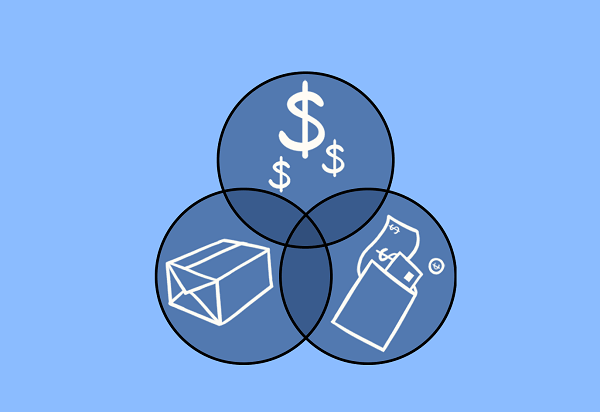In recent years, climate change has been more commonly discussed in the public arena than any other as more and more people focus on trying to find ways to reduce their carbon footprint.
Have you ever questioned precisely how big a problem climate change is?
How serious are the repercussions going to be, and what exactly can businesses do to reduce their carbon footprint and help cut down pollution on our planet?
The Climate Change Levy is one of several environmental tax and rebate schemes to encourage businesses to be more environmentally conscious.
Here’s all you need to know about the CCL and how your company may be able to pay a lower rate. To learn more, you can also check out Business Energy Comparison for more information.
What is the Climate Change Levy?

The Climate Change Levy is a tax introduced in 2001 to encourage businesses and individuals to reduce their carbon footprint.
It is to encourage businesses to invest in renewable energy and energy efficiency projects, which are more cost-effective than installing new fossil fuel-powered equipment.
Businesses pay the Climate Change Levy if they produce more than 24,000 tonnes of CO2 annually. This includes large industrial users such as power stations and oil refineries and smaller businesses such as farms and factories.
CCL is paid at either the introductory rate or the Carbon Price Support rate, as shown below:
Main rate
All businesses in the industrial, commercial, agricultural, and public services sectors will be taxed CCL at the introductory rate, such as coal, electricity, gas, and solid fuel.
Carbon Price Support Rate
You must pay this rate if you own or operate electricity-producing stations or combined heat and power plants.
However, if you create your electricity and earn money through the Feed-in Tariff, you are unlikely to be required to pay the fee because you are a small generator.
How much is the Climate Change Levy?
The main charge was 0.811p per kWh for electricity and 0.406p per kWh for gas as of April 1, 2020.
The rate for electricity fell to 0.775p per kWh on April 1, 2021, while the rate for gas rose to 0.465p per kWh.
Because you can generate electricity from renewable sources such as wind and solar, it is considered a “greener” energy source than gas.
Your energy provider will compute the CCL and automatically add it to your bill as a separate item. You will pass on the charge to HMRC once collected.
Do all businesses have to pay for it?

No. The CCL only applies to certain types of businesses. So you can pay the Climate Change Levy if you’re a charity or not-for-profit organization.
If you have at most 50 people, you don’t have to pay the Climate Change Levy. But you still need to register with HMRC and report your emissions, if applicable, every quarter.
You don’t have to register for the scheme if you generate less than £10k of eSSB sales in the UK each year.
How can a business pay a reduced rate on CCL?
If your company is not exempt, you can lower your costs by making your company more energy efficient.
The most effective method to accomplish this is to agree to a Climate Change Agreement (CCA), which may provide you with a CCL rate reduction of up to 90% on electricity bills and a 65% reduction on all other fuels.
In exchange, you must enhance your company’s energy efficiency and minimize your average energy use.
By signing a CCA, you agree to measure and report your company’s energy consumption and carbon emissions against agreed-upon targets over four two-year periods.
If your company meets its targets at the end of each period, you can remain in the scheme and earn the CCL discount.
Five simple tips on how to make your business more energy efficient

You can take various steps to assist your company in becoming more energy efficient, many of which are simple.
By implementing these methods, you will not only lower your company’s carbon impact, but you will also save money.
Turn off office equipment.
You may be surprised by how much energy can be saved simply by turning off office equipment when it’s not in use.
For example, computers and printers must be switched on for the entire day, seven days a week, even if they’re not being used.
This means that over time they use up more electricity than needed and increase both the cost of running your business and its carbon footprint.
Change light bulbs
Changing light bulbs is one of the easiest ways to reduce carbon emissions. It may sound simplistic, but it is a great way to reduce energy consumption and save money.
Switching from incandescent bulbs to CFL (compact fluorescent lamps) or LED (light emitting diode) bulbs can save you up to 80% on your lighting bill.
As well as more energy efficient and last much longer than traditional light bulbs, so they are a win-win situation.
Adjust the thermostat
Heating and cooling take up about half of all energy in a typical building. So if you want to reduce your energy bill, start by adjusting your thermostat.
Setting your thermostat at 72 degrees in summer and 68 degrees in winter can help lower your utility bills by 10% or more.
If you need help determining how hot or cold, it should be in your office building, check your local utility company website for recommended temperatures based on the time of day and season.
Use a smart meter
A smart meter is an electric meter that records usage in near real-time. It can also send that information directly to you via email or text.
This way, you can see when peak times occur and when you use the most electricity. You can then adjust your habits accordingly so that you only use the energy you need when you need it most.
Invest in a sound insulation
This is one of the best ways to reduce heat loss and save money on utility bills. You can insulate walls, floors, and attics or hire a contractor.
Final Thoughts
The CCL is a crucial factor that companies need to consider, and some industries will likely be more affected than others. To help you understand the impact on your own business, make sure to check out this article.
Read also:

